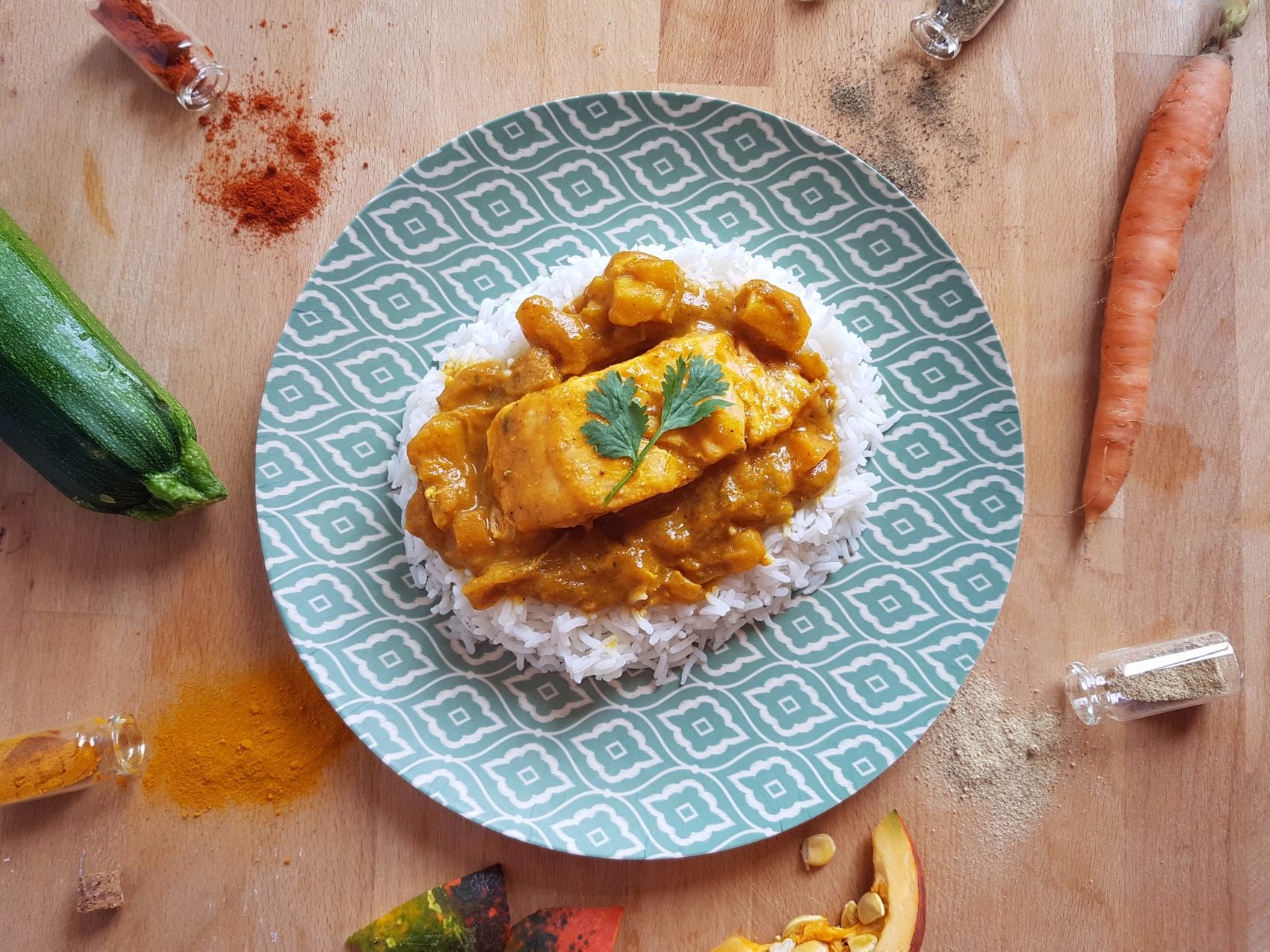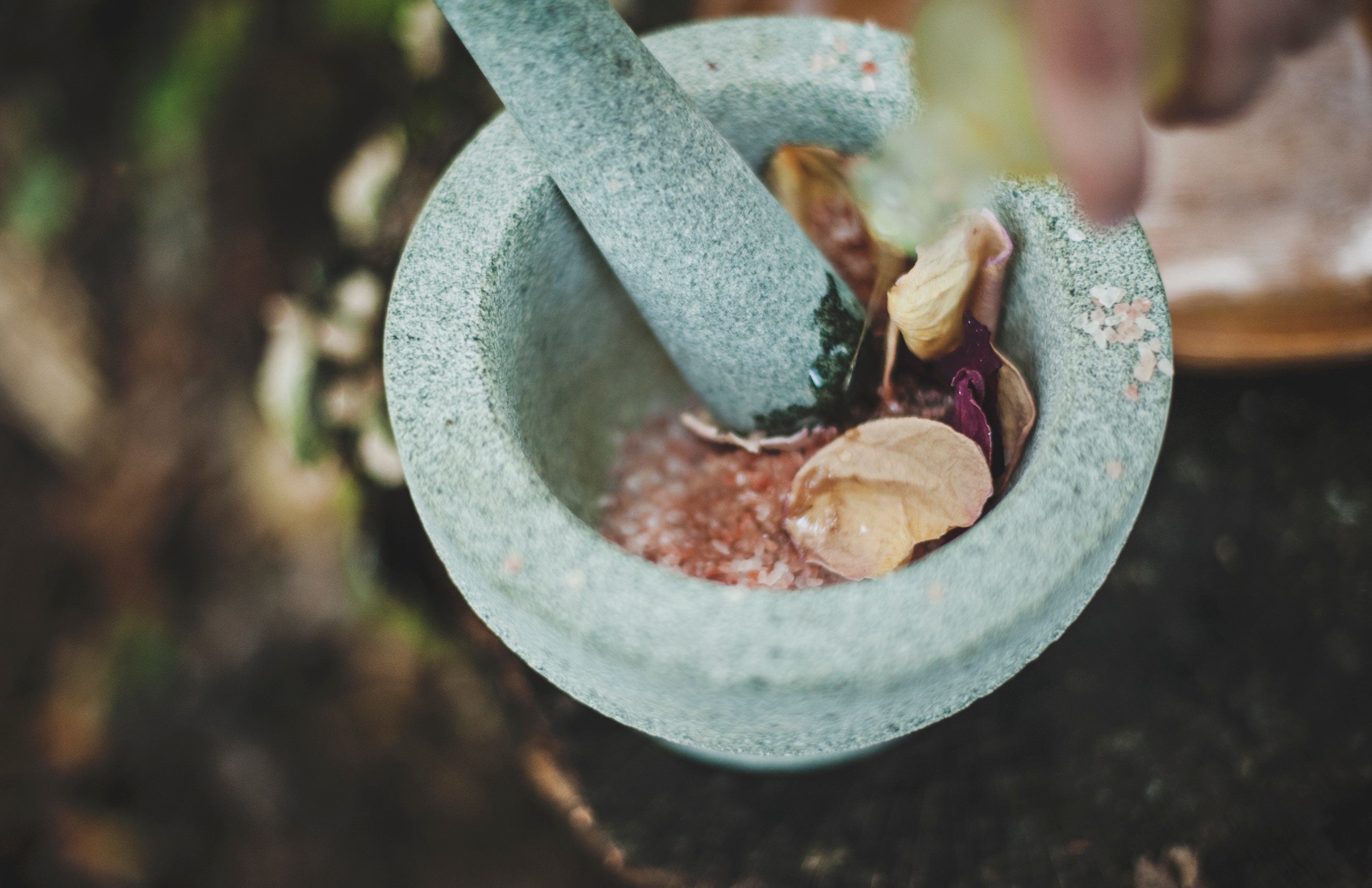For 4 people
Ingredients
4 Salmon fillets
1 medium onion
1 garlic clove
1 Carrot
1 medium zucchini
½ Red pepper
1 medium potato
Olive oil
100 ml water (or coconut milk if you want to give it a tropical touch)
For the Curry
2 teaspoons turmeric powder
1 teaspoon cumin powder
1 teaspoon of ground black pepper
½ tablespoon cardamom powder
½ teaspoon cinnamon powder
½ teaspoon chili powder or paprika
Preparation
1- Wash all the vegetables well, put about 10 ml of oil in a frying pan over medium heat and put the whole clove of garlic in it. Cut the onions into medium squares and add to the frying pan.
2- Cut the potato into small squares, add and cover for about 7 minutes.
3- Add the carrot cut in medium slices, stir for a few minutes and then add the red pepper cut in medium pieces
4- Finally add the zucchini cut in not very thick crescents. Let it cook for a few minutes.
5- In a bowl mix all the spices, depending on your taste you can add more or less ingredients. Add to the pan and cook, stirring all the ingredients for a couple of minutes. When the spices start to smell, add the water. Cover and leave to cook for 5-10 minutes. If you notice that too much water has evaporated, add more.
6- Heat a little oil in a non-stick frying pan and seal each side of the loin over a high heat for just a few seconds, being very careful not to break them.
7- Check that the vegetables are cooked and if so, add the salmon, making sure the sauce covers it well. Cover again and cook at medium-low heat for 5 minutes. It is very important not to overcook the vegetables or the salmon!
8- Now if you are ready to take advantage of a healthy salmon and vegetable curry, I recommend accompanying it with white rice. Buon appetito!
Some history…
The first time I saw a family recipe was on an English TV show prepared by a family of Indian origin, the Gangotra family, whose recipe is here.
The word curry is an Anglicism that would come from “karil”, which in several South Indian languages refers to the spices used to season dishes. Ultimately curry would be a generic word for a mixture of spices for cooking various dishes.
According to an article published in the Smithsonian blog, curry is a preparation with more than 4500 years of history. Through studies of skeleton and bowel waste from excavations in India it was discovered that it was common to combine three ingredients that are basic to any curry: ginger, garlic and turmeric.
Curry was introduced early in England, and widely accepted, so much so that in late 1300 or so, the first known English cookbook is called The Form of Curry, a book containing 205 recipes that include many exotic ingredients.
And another important fact, originally the curries were not spicy, because chilies did not exist in the region, it was not until about 1600, after the discovery of America that they were introduced to the Indian diet.
An interesting socio-economic issue...
According to the FAO, high prices of salmon are here to stay, as global demand has increased while ecological problems in the various wild growing areas have decreased global production.
These problems were visible since 2016, according to the institution’s data wild Alaskan salmon harvests decreased from 462 250 tons in 2015 to 270 570 tons the year after. In addition, the production and market for Pacific salmon has been affected by two factors, one ecological by the flowering of harmful algae in Chile and another social because there has been an increase in global concern by knowing that farms in Chile often use antibiotics, this has led to a reduction in demand for fish from this area.
In principle this improved the market situation in Norway as demand increased and the price rose, but it poses a major sustainability challenge.
Nutrition…
Salmon contains a lot of protein and essential fatty acids that go well to protect the body from cardiovascular disease. It contains good amounts of calcium which is great for bone health and magnesium which helps with muscle relaxation and regeneration.
But I want to talk especially about spices, a few months ago I bought a magnificent book Healing Spices, written by a doctor of Indian origin where he names all the properties (and some recipes) of various spices. Let’s go over the essentials of some of the ones we use here:
Turmeric: First of all, it is considered the number one anti-cancer in the world, some studies have shown that it reduces the number of anti-cancer cells. Its main component is called curcumin and scientific evidence has shown it to be a great anti-inflammatory and full of antioxidants that even slow the progression of Alzheimer’s. There are two things to point out, the first is that turmeric, despite being the main supplier, actually has low amounts of turmeric. And the most important thing is that the absorption of curcumin is low, so you have to take it with other elements that help this absorption; like black pepper because it contains piperine.
Cumin: Cumin is good for treating diabetes because it helps lower cholesterol and blood sugar levels.
Cardamom: Cardamom comes from the same family as ginger. It has been used since time immemorial as a cure for various types of conditions, from cardiac, respiratory to gastrointestinal. It has been an extremely valued species throughout history, so much so that at one time it was worth its weight in gold. In the pharmaceutical industry, the essential oil of this spice is used as a fungicide and antibacterial.


